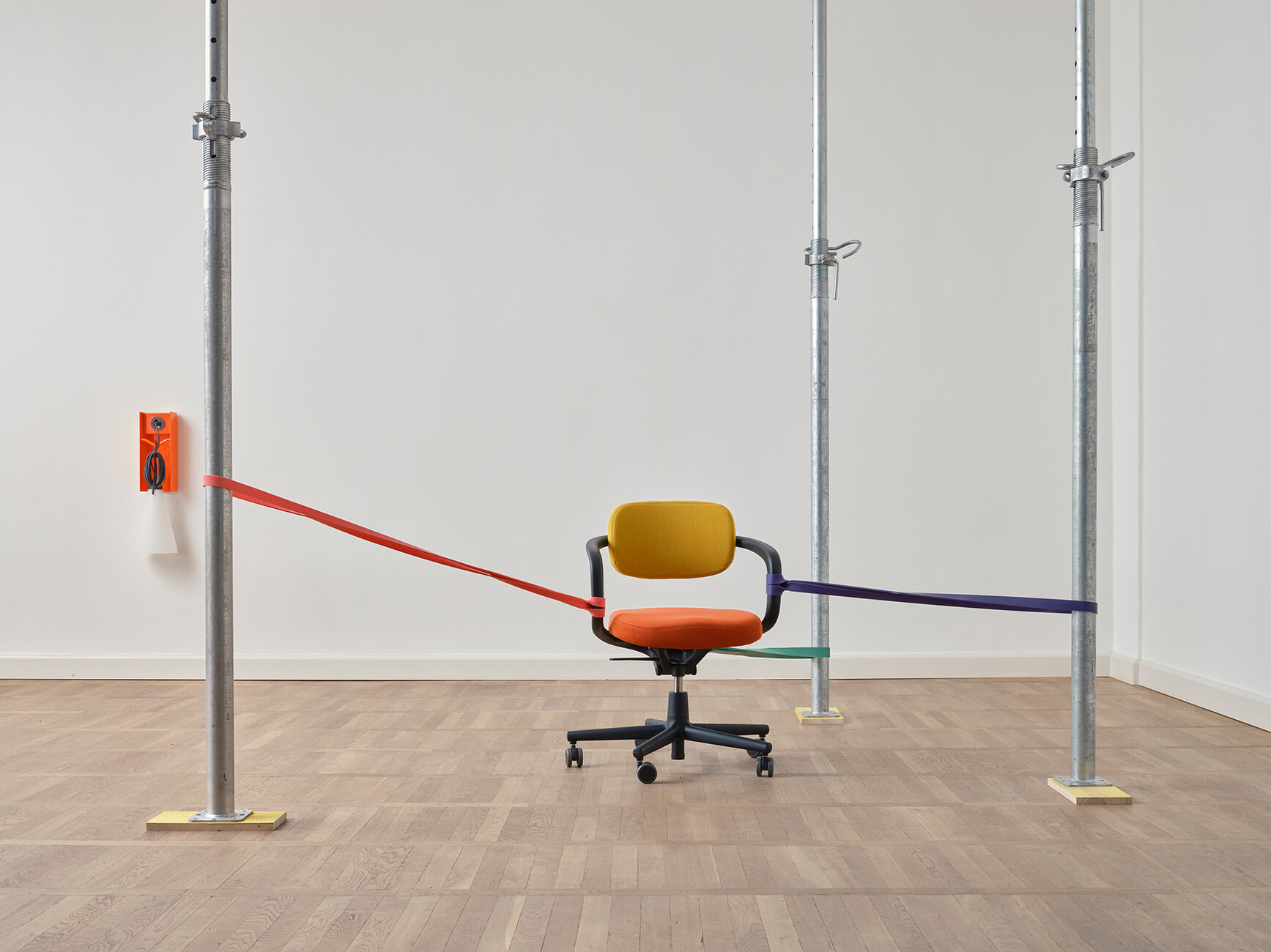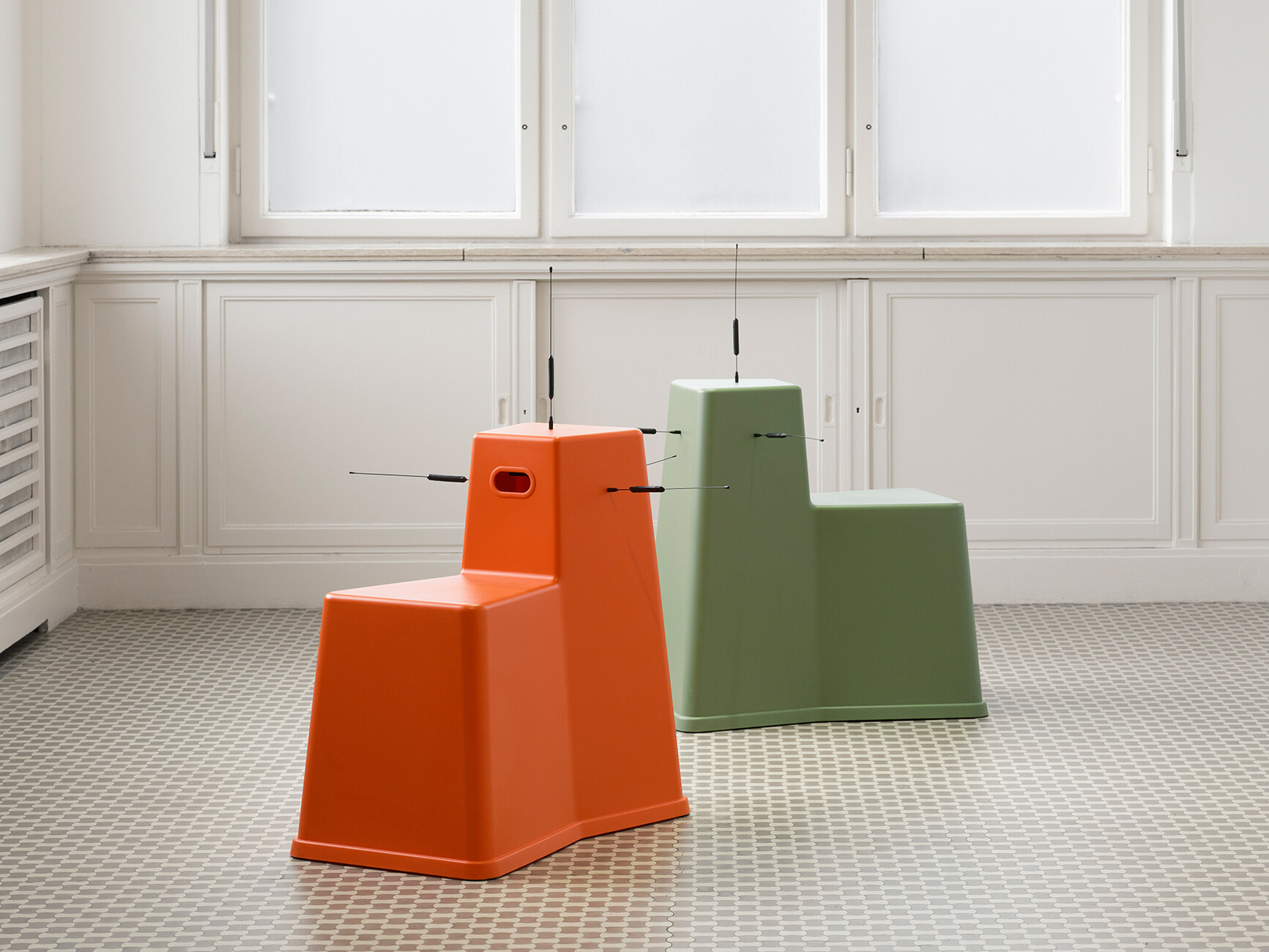Projection forward
Design, and it is still a mystery to us today, could already be simply everyday life tomorrow – by fulfilling functions for a technology that we at present don't yet know or by satisfying a need our reality has not yet sparked. “The point is not to formulate a vision for a specific future, but to allude to and road-test forward-looking fragments of possible normalities to come,” says Grcic. The rooms in the Haus am Waldsee in Berlin which Max Werner once designed as a private villa in 1922-3, provide the ideal combination of stage and homely atmosphere to showcase the works. The exhibition not only tests which adaptations to Konstantin Grcic’s design might make sense in a vision of the future, but also just how much familiar objects can unsettle us if they are altered by going beyond their familiar functions. The small interventions with which Grcic adapts and stages his works seem whimsical and at times amusing.
The "Brut" sofa by Magis becomes a sports arena in a double pack with a gymnastics ball and safety net, the radius of the "Allstar" office chair by Vitra is limited by overhead supports and gymnastics straps, "Myto" by Plank hangs upside down from the ceiling and the "Medici lounge chair" for Mattiazzi has a Citroën DS4 windscreen suspended in front of it. Influencers will be pleased with the "Traffic Chaise Lounge", which is equipped with selfie sticks: in future, this could help to continue to supply the digital community with images of a constructed reality. Meanwhile, the hitherto always flexible "Mayday" for Flos is permanently installed in every room on a red-coloured background, as if this feature is now prescribed by law. "What distinguishes the future from the now are the many subtle details and small changes that, taken together, will change our lives in the next five, ten and twenty years. Unimaginable today, they will then seem quite natural to us," says Grcic.
By adding a new function to his objects, the designer also fulfills his desire to freely continue advancing his ideas that originally had to be finalized in order to ready them for market. "In computer jargon, this form of intervention would be called hacking," he says. In fact, visitors can for themselves start imagining advances to the creative ideas offered by the works, because what the show at Haus am Waldsee presents on a small scale also points to the bigger picture: a world we have dreamed up and which by means of interventions and updates we are constantly adapting for modern society. The decisive role that design plays in our reality, current emotions that are reflected in it and the possibilities of using design to create both a utopian and a dystopian future are what he gets to the point with "New Normals". "The future cannot be known - but it can be designed," Grcic says.
Konstantin Grcic
New Normals
21 January to 8 May 2022
Haus am Waldsee
Internationale Kunst in Berlin
Argentinische Allee 30
14163 Berlin
Tel. 030 - 801 89 35
Opening hours: Tuesday to Sunday, 11 a.m. to 6 p.m.
Access to the exhibition is only possible with a time slot. You can book time slots here.




















